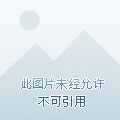In the process of daily reversing, it is inevitable to encounter low obstacles in the rear. At this time, in addition to the need for the driver to observe and predict in advance, you can also use some auxiliary means, such as reversing images, reversing radar and other equipment, which can also achieve the effect of avoiding scratch risks.
After all, there are real scene images for reference, but there is no reversing image on the car of individual owners, only the reversing radar? Below, Coach Shi will tell the novice riders how to judge the distance between the rear of the car and the obstacle through the sound frequency of the reversing radar?

When Coach Shi takes the novice driver of the practical class to practice the second lesson [Various Difficult Parking], he will combine the on-site examples to explain how to judge the spacing between the front, tail and obstacles. If the trainees bring their own car without reversing images, only reversing radar, I will also help them quickly find their own car to deal with.
As we all know, there are three different colored line segments in the reversing image, corresponding to three different distances from far and near. Reversing radar, although not as intuitive as the image, can preset three different distances through the frequency change of the sound prompt.
For example, when I ask the student to reverse backwards, stop when it is about 1 meter away from the rear obstacle and let the student listen carefully to the rhythm of the sound of the reversing radar. At this time, you will hear a drop-drop-drop sound, and the rhythm is relatively soothing. At this time, I will let the trainees get out of the car themselves, go to the rear of the car to observe the actual distance between the rear of the car and the obstacles, and also use the mobile phone to take pictures, so that it is convenient to go back and deepen the memory.
Next, the trainees got into the car and continued to fall backwards, stopping again at a distance of about half a meter or so. Have the trainee listen carefully to the sound frequency of the reversing radar. This time, it was obvious that it felt like a drip-drip-drip, and the sound was a little more urgent.
Again, I asked the trainees to get out of the car to observe the actual spacing between the rear of the car and the obstacles. For example, when parking in the side direction, the distance between the rear of the car and the front of the rear car can refer to this distance (see the figure above).
Next, get in the car and then step back, this time we'll measure the minimum spacing. As shown in the figure below, parking near the daily community does not necessarily have a planned parking space. Sometimes, it may be possible to park close to the low obstacle behind, which requires a minimum distance between the rear and the obstacle.
This minimum distance of only 30-50 cm can be preset according to your own needs. When the trainee gets out of the car to see the actual spacing, and then reverses later, he knows how to make the rear of the car stop at this safe distance.
When stopping at this minimum distance, let the trainees carefully distinguish the rhythm of the radar tone, the drip sound is obviously particularly dense, accompanied by a long chirp.
When the trainees correspond these three sounds to the actual distance of the three visual measurements, and then reverse later, the real distance between the rear of the car and the obstacle can be judged by the change of the sound frequency of the reversing radar. This is equivalent to constructing a three-dimensional reversing image in the mind.
Coach Shi often told the students that if you want to integrate people and vehicles, you must have a sense of space, even if you sit in the car and can't see the low obstacles near the front or rear of the car, as long as the spatial image in your mind can reflect the real scene, you can safely park the car at the minimum distance from the obstacle without any scratching.
Well, the topic of reversing radar is here, welcome everyone to continue to pay attention to Coach Shi talking about driving, tell me the practical problems you encountered in the driving process, I will choose some representative problems and discuss with you.